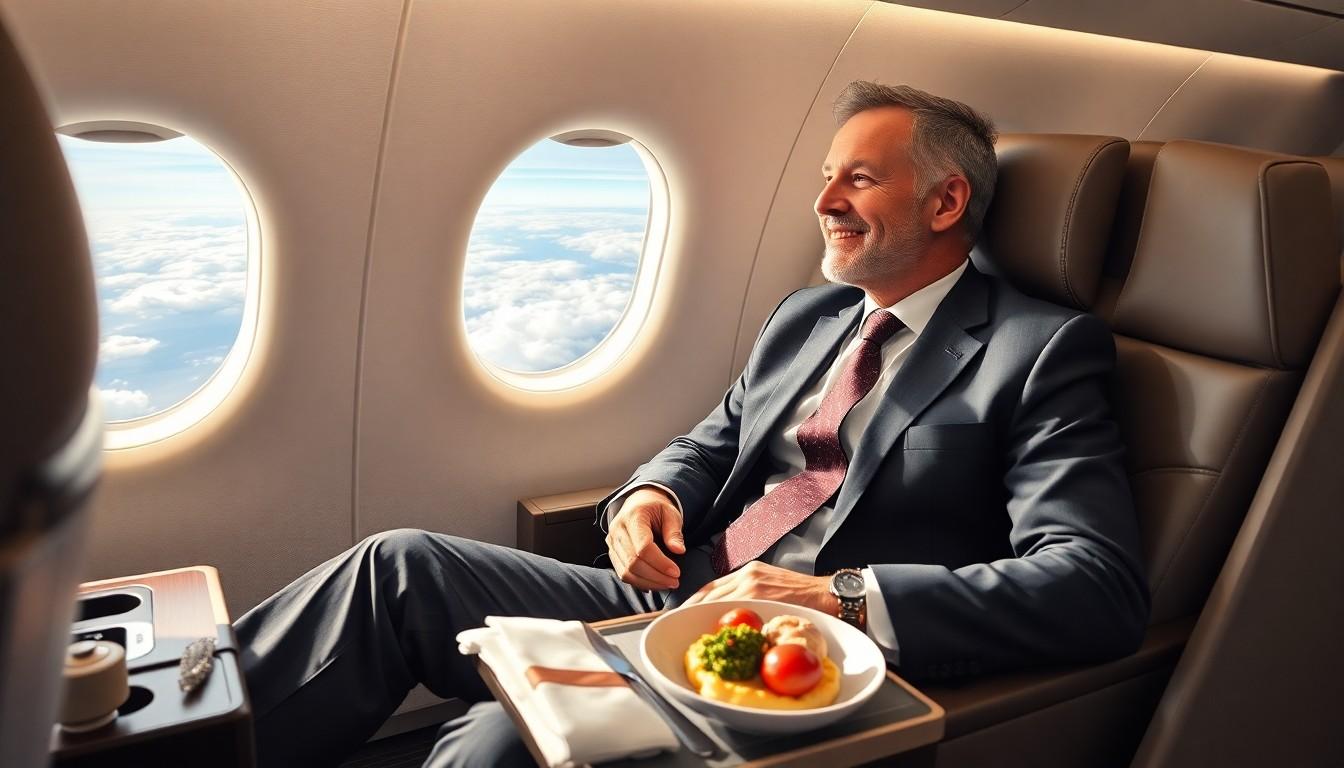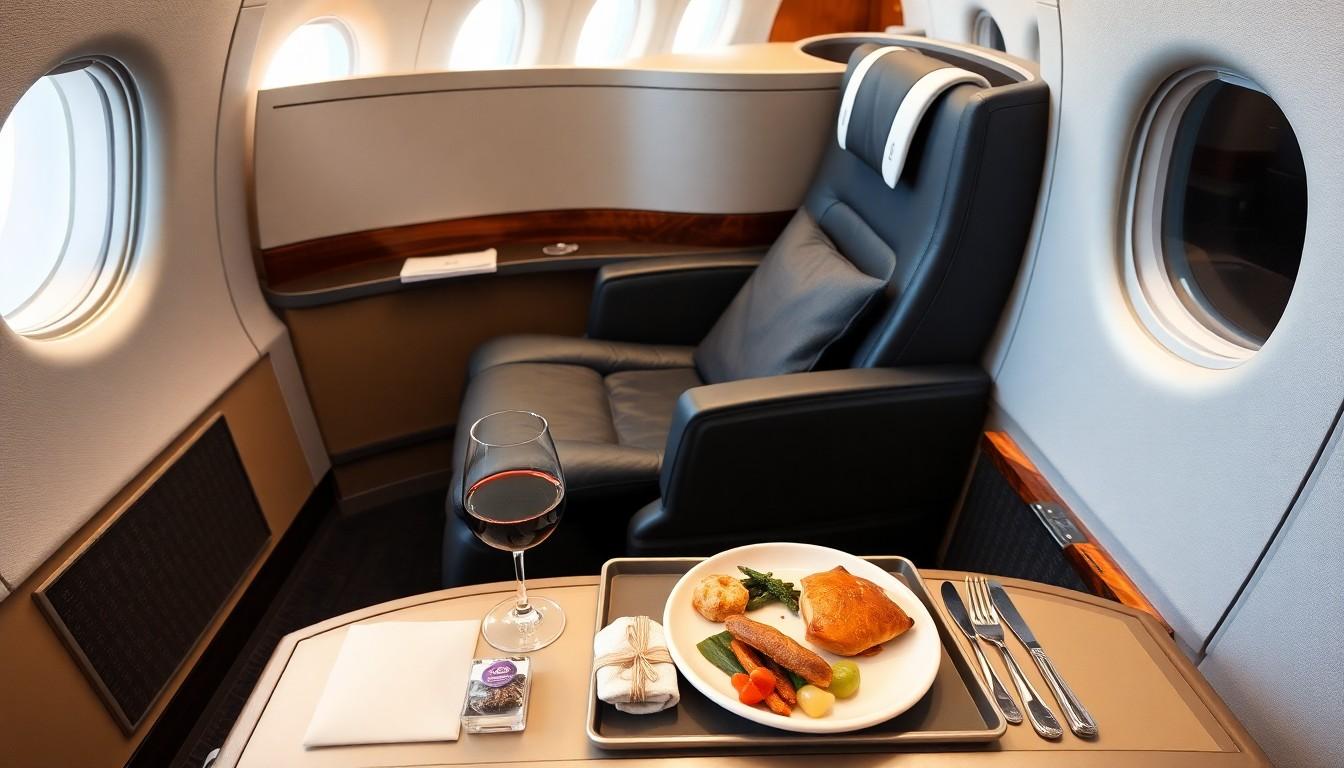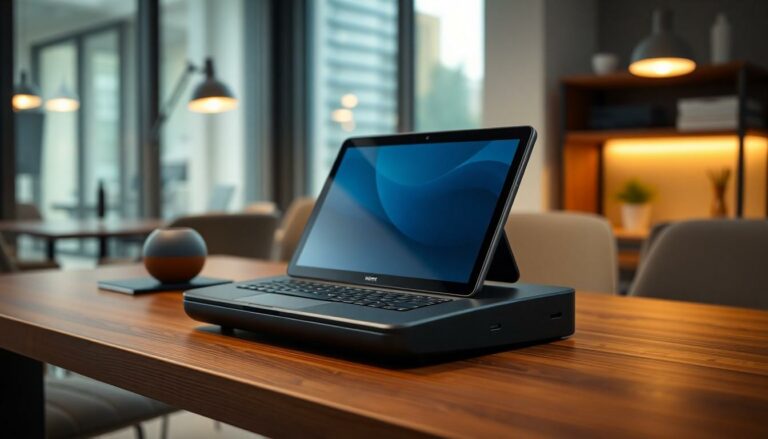Economy vs Business Class: Is the Upgrade Worth the Cost?

When it comes to flying, the age-old debate between economy and business class is as heated as a middle seat battle. Travelers often find themselves weighing the pros and cons of legroom versus leg cramps. Is it worth splurging on that extra space? Or does the allure of a complimentary snack box make a cramped seat feel like first class?
In this article, we’ll dive into the world of air travel to uncover the true differences between economy and business class. From the luxurious perks that make you feel like royalty to the budget-friendly options that keep your wallet happy, there’s a lot to consider. Buckle up as we explore whether that upgrade is really worth it or if you’re better off saving those dollars for a vacation cocktail.
Economy Vs Business Class
Travelers often face choices between economy and business class when booking flights. Economy class features budget-friendly options, appealing to those prioritizing cost savings. Basic amenities in economy include standard seating, limited legroom, and fewer meal choices. It caters to passengers seeking functionality over luxury.
In contrast, business class offers enhanced comfort and service. Priority boarding ensures business travelers settle in quickly. Wider seats, increased legroom, and recline options contribute to a more relaxed journey. Passengers also enjoy gourmet meals, premium beverages, and access to exclusive lounges. These perks elevate the overall travel experience, making it suitable for those valuing comfort and convenience.
Pricing differences play a significant role in decision-making. Business class tickets can cost two to three times more than economy. This disparity prompts many travelers to weigh the benefits against their travel budget. For some, luxury and comfort justify the extra expense, while others prefer saving for future experiences.
Amenities differ significantly between classes. Economy offers basic entertainment options, while business class provides larger screens and a more extensive selection of movies and shows. In-flight services also vary; flight attendants often prioritize business class passengers, ensuring swift responses to requests.
Overall, the choice between economy and business class hinges on travel priorities. Comfort, service, and pricing considerations influence travelers’ decisions. Understanding these differences helps individuals select the best class for their specific needs and preferences.
Key Differences Between Economy And Business Class

Economy and business class serve distinct preferences, impacting travelers’ experiences. Key variations lie in seating comfort and in-flight services.
Seating Comfort
Seating comfort represents a primary distinction between the two classes. Business class features wider seats that recline more significantly, enhancing overall relaxation. Travelers in this class enjoy increased legroom averaging 38 inches, compared to economy’s typical 30 to 32 inches. Privacy is also a benefit; business class often has more space between seats, allowing for a calmer environment. Additionally, many airlines offer seats that convert to beds, catering to long-haul travelers seeking rest.
In-Flight Services
In-flight services vary significantly, reflecting class distinctions. Business class passengers frequently receive gourmet meals prepared by renowned chefs, while economy meals are straightforward and less diverse. Complimentary drinks in business class include a selection of fine wines and spirits, enhancing the dining experience. Also, attentive staff cater to business class needs more promptly, ensuring a better service experience. Economy class may provide limited snack options and basic beverage choices, prioritizing budget-conscious travelers.
Cost Comparison
Cost plays a significant role in the decision between economy and business class. Several factors contribute to overall expenses that travelers must consider.
Ticket Prices
Business class ticket prices can reach two to three times higher than economy class fares. Typical economy class tickets range from $200 to $600 for domestic flights, whereas business class tickets often start around $600 and can exceed $2,000. Passengers looking for budget-friendly options typically select economy, as these prices appeal to a broader audience. Business class passengers appreciate the luxurious experience but pay for the extra comfort and services. Seasonal fluctuations can also affect ticket prices substantially, especially during holidays or peak travel times.
Additional Fees
Both classes may incur additional fees, but they vary considerably. Economy travelers often face charges for checked baggage, seat selection, and meals, which can add $100 to $300 to the ticket cost. Conversely, business class tickets usually include complimentary amenities such as priority boarding, additional luggage, and gourmet meals. Passengers frequently enjoy an overall enhanced travel experience without the added costs. Frequent flyers in business may also benefit from loyalty programs that offer upgrades and discounts, leading to better value for their investment.
Passenger Experience
Travelers experience significant differences between economy and business class, particularly regarding comfort and convenience.
Boarding Process
Business class passengers board first, allowing them to settle in before the economy class crowd. This priority boarding reduces stress and provides ample time to store personal items. Economy class passengers typically board last, resulting in longer waits and potential overhead bin shortages. Business travelers benefit from expedited security clearance at some airports, streamlining the process. Frequent flyers can sometimes enjoy special lanes, enhancing their travel experience further. These advantages make for a smoother, more efficient journey for those flying in business class.
Amenities Offered
Amenities in business class significantly surpass those found in economy. Business class provides travelers with lie-flat seats, access to private lounges, and premium bedding, enhancing in-flight comfort. Gourmet meals curated by renowned chefs accompany complimentary wines and spirits, elevating the dining experience. In contrast, economy class meals often feature simple offerings with limited choices. Basic amenities such as smaller seats and fewer beverage selections highlight the differences. Travelers in business class also enjoy enhanced in-flight entertainment systems, with larger screens and a broader selection of content compared to economy. These amenities contribute to a more pleasurable travel experience for business class passengers.
Individual Priorities
Choosing between economy and business class ultimately comes down to individual priorities. For those who value comfort and luxury during their travels business class offers a superior experience with enhanced seating and gourmet meals. On the other hand budget-conscious travelers may find economy class more appealing with its affordability despite the trade-offs in comfort and service.
Travelers should weigh their preferences against their budgets and consider how often they fly. Whether opting for the extra comfort of business class or the cost savings of economy each choice has its unique advantages that cater to different travel needs.


